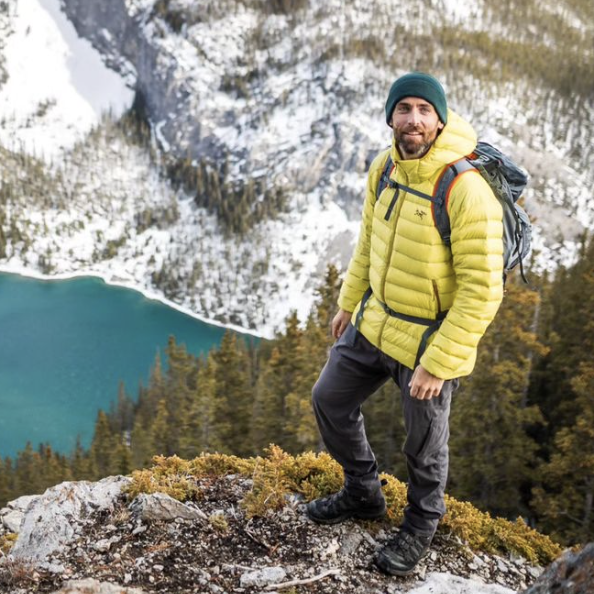Total Items: 0
Sub Total: $0.00
If you’re feeling overwhelmed trying to choose the perfect climbing shoes, you’re not alone. With so many options out there, it’s easy to get lost in the details. But don’t stress — Simon's here to help break it all down for you.
Start by thinking about how and where you’ll be climbing. Are you planning to spend hours scaling multi-pitch routes? Or are you sticking to quick bouldering sessions at your local gym? Your climbing style will heavily influence the type of shoe you need.
For multi-pitch routes, comfort is key, so look for shoes that are supportive and fit snugly but not painfully. For bouldering, you’ll likely want something with a more aggressive fit for maximum performance on tricky overhangs.
This choice comes down to comfort and convenience:
• Laces: Great for dialing in a perfect fit. They’re ideal for long climbing sessions where comfort matters most. However, they take a little more time to put on and take off.
• Velcro: Quick, easy, and perfect for short climbs or gym sessions. You can pop them off between climbs for a breather.
The sole design makes a big difference:
• Split Sole: More flexible, making it easier to move your foot and hook on holds. These are common in technical bouldering or sport climbing shoes.
• Full Sole: Provides more support, great for beginners or climbers tackling micro-edges. They’re ideal if you’re not used to standing on your toes for long periods.
Climbing shoes come in two main profiles:
• Aggressive (downturned): These focus power on your big toe, giving you the edge (literally) on steep, overhanging climbs. But they’re less comfortable, so you’ll need to size them accurately and take them off between climbs.
• Flatter Shoes: More comfortable and better for all-day climbs or crack climbing. Many beginner shoes have a flatter profile to prioritize comfort and encourage more climbing.
The rubber on your climbing shoes impacts grip and durability:
• Softer Rubber: Offers better grip but wears out faster. Ideal for precise climbing.
• Harder Rubber: More durable, making it perfect for beginners who are still refining their footwork.
Women’s climbing shoes often have softer rubber to account for lighter climbers, while beginner shoes typically come with harder rubber to handle the wear and tear of learning.
Fit is crucial, and every brand sizes a little differently. Here’s what to keep in mind:
• No Dead Space: The shoe should hug your foot without air pockets.
• Tight but Not Painful: Your toes should touch the front of the shoe, but not be painfully squished.
• Heel Fit: Give the heel a tug to make sure it doesn’t slip off.
Remember, some shoes stretch over time, especially those with leather uppers. If they feel tight but not unbearable in the store, they’ll likely break in nicely. On the flip side, if they’re loose to start with, they’ll only get looser.
For Beginners: Go for comfort and durability. Shoes like the Evolv Defy, Black Diamond Momentum, or Scarpa Origins are great choices. They won’t break the bank and will stay comfy for longer climbs.
For Intermediates: Think about versatility. You might want a flatter, full-soled shoe for long days outdoors, plus a more technical, downturned shoe for gym or bouldering. Some great picks include the Tenaya Mundaka for comfort and the Evolv Phantom for technical climbs.
For Advanced Climbers: By now, you probably know what works for you. But if you’re experimenting or want advice, the team at Wild Earth is always here to help.
Choosing climbing shoes is a personal journey. If you can, visit a store and try on a few pairs to find your perfect fit. Remember, the goal is to climb more comfortably and confidently, so you can focus on the fun and challenge of the climb rather than your feet.
Happy climbing, and see you out there!
Not sure what gear you need for your adventure? Chat with our friendly team of Outdoor Gear Specialists in-store or online today and don’t forget to share your adventures with us on Instagram by tagging @wildearthaustralia and #mywildearth in your next post.
About the contributor:
 Simon Ennals is a Wild Earth ambassador, landscape photographer and outdoor enthusiast. Whether it's trail running, climbing or hiking you'll find Simon outdoors testing gear and exploring the Canadian Rockies where he resides. Follow his adventures on Instagram (@simonennals)
Simon Ennals is a Wild Earth ambassador, landscape photographer and outdoor enthusiast. Whether it's trail running, climbing or hiking you'll find Simon outdoors testing gear and exploring the Canadian Rockies where he resides. Follow his adventures on Instagram (@simonennals)